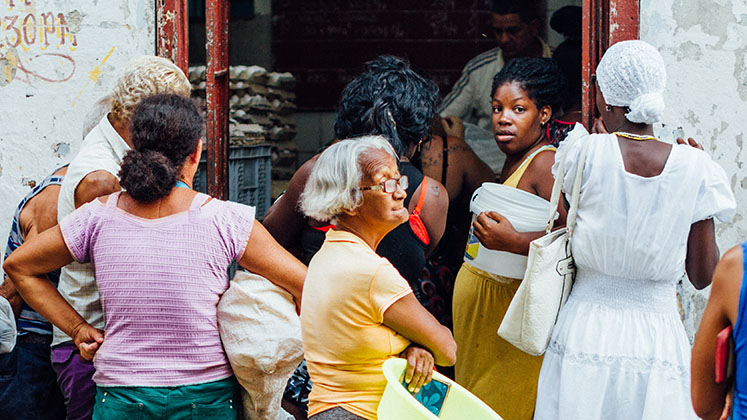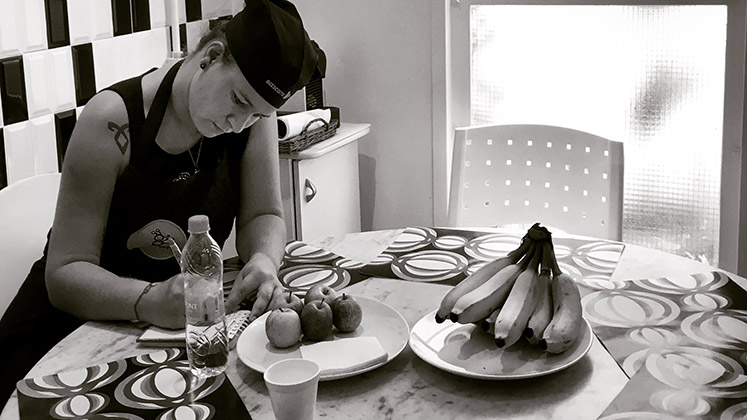 Just as women bore the brunt of the crushing post-Soviet recession that began in 1990, recent shifts in international politics are again feminising the effects of economic crisis in Cuba, writes Daliany Kersh (Richmond, the American University in London).
Just as women bore the brunt of the crushing post-Soviet recession that began in 1990, recent shifts in international politics are again feminising the effects of economic crisis in Cuba, writes Daliany Kersh (Richmond, the American University in London).
On International Women’s Day in 2005, at a conference of the Federation of Cuban Women, the then president Fidel Castro officially announced that “the Special Period is already behind us”. His choice of venue was somewhat ironic, however, as it was Cuba’s women who were most affected by the post-Soviet economic crisis (1990-2005), particularly as GDP and annual consumption dropped by a drastic 38 per cent between 1990 and 1994.
The Cuban economy did go on to recover significantly as a result of policies that made tourism, nickel, pharmaceuticals, and medical-services exports Cuba’s primary industries in place of sugar and tobacco. But the Trump administration’s recent decision to ban travel to Cuba and tighten the embargo, the decline of the Maduro government in Venezuela, and changes of government in countries like Brazil, Bolivia, and Ecuador have together resulted in a significant loss in trade.
While the economy is officially projected to grow by one per cent in 2020, the general populace has again been hit by extreme shortages of food and consumer goods, just as in the Special Period. But will Cuban women, as primary caregivers and managers of household economies, once again bear the brunt of severe shortages and austerity measures? Or have the right steps been taken to prevent another feminised economic crisis?

The feminised effects of the Special Period
The position of women in Cuba’s public sphere was significantly advanced during the first three decades of the revolution, particularly by government policies supporting gender parity in employment. However, adherence to traditional gender roles in the private sphere also resulted in an increased reliance on female labour, and since women were responsible for procuring scarce foodstuffs and essential goods on the black market, it is they who were most affected by the extreme shortages and cutbacks in public services during the Special Period.
This feminisation of the crisis was exacerbated by a significant increase in female-headed households. Already triply disadvantaged in terms of gender, race, and class, Afro-Cuban women were also disproportionately affected by Special Period policies like the legalisation of the US dollar (1993) and family remittances (1994), as the vast majority of those sending money home were white.
The impact on the Cuban employment system was also significant, with an exodus of professionals. Tens of thousands of Cuban graduates whose salaries were paid in the devalued Cuban peso abandoned their state jobs for menial jobs in the newly created tourism sector in order to access tips in hard currency. Moreover, the legalisation of self-employment (cuentapropismo) in 1994 created an avenue through which hundreds of thousands of Cubans could generate hard currency outside of the state sector.
Although many academic studies claim that a significant percentage of women voluntarily gave up their state professions during the Special Period, women’s representation in the state workforce actually increased during the late 1990s following government campaigns to reincorporate them. Collective cultural norms celebrating women who studied and worked were influential with women in state careers, and it was men who more often opted for better-paid jobs in the private and tourism sectors. Up until 2010, in fact, 90 per cent of women worked in the public sector, though they would often combine state employment with informal or illegal earning opportunities in order to make ends meet.
Women with neither the educational qualifications to enter the tourism training school nor the resources to pay for a self-employment licence often resorted to offering informal services within their own neighbourhoods. Typically, this might involve petty pilfering of state-owned goods for resale on the black market (known as “la lucha“, or “the struggle”), or – far less frequently than is often claimed – women would turn to romance tourism or jineterismo.
The main advantage of informal work for women during the crisis, apart from the potential to earn significantly more, was that they could operate from within their home or neighbourhood, making it easier to deal with their increased domestic and childcare responsibilities.
Feminisation of Cuba’s economic crisis today
Fifteen years on from the official end of the Special Period in 2005, the same issues and problems are still central to the daily life of all Cubans. A state salary is still not enough to survive on, and an additional source of income is necessary to maintain a decent standard of living. The food and consumer goods provided by the libreta ration book still do not stretch to cover the entire month, and so many Cubans have to purchase prohibitively expensive food in agricultural markets, dollar stores, or on the black market.
But even this already difficult status quo worsened considerably in early 2019 as a result of the loss of hard-currency income from Venezuelan oil, from the export of medical professionals via the Mais Médicos programme in Brazil, and from a drop-off in trade (particularly in the form of tourism) following the tightening of the US embargo.

From spring onwards, Cuba could no longer afford to import two-thirds of its food. Since the feed for chickens and pigs is also imported, even domestic produce such as eggs and pork began to disappear from the shelves. Rationing of these items, as well as flour, rice and cooking oil, was extended so that everyone would have equal access to these essentials, but again it was women who had to spend hours in food queues, to negotiate on the black market, and to cook with intermittent power and water outages.
These scenes were reminiscent of the Special Period, with the addition of a few digital adaptations. Greater access to the internet and the creation of WIFI hotspots, albeit at a prohibitively expensive price of one dollar per hour, enabled the creation of WhatsApp groups such as Where Can I Find? (¿Dónde hay?) that allow women to share tips on locating scarce items.
Yet, a survey of the most serious issues for Cuban women by the National Office of Statistics found that low salaries were paramount (73%), whereas women’s double duty (30%) and food shortages (26%) came in fourth and sixth respectively.
New legislation and employment policies have allowed women to slightly increase their representation in the two most lucrative sectors, reaching 42 per cent in tourism (36 per cent in 1999) and 34 per cent in self-employment (18 per cent in 2005). But women’s work in these sectors is generally unskilled and involves traditionally feminised notions of labour.
State salaries and the international context
While women continue to occupy over two-thirds of highly prestigious professional and technical posts, these jobs are poorly-paid and in spite of considerable salary increases. The most recent came in July 2019, but the average monthly state salary of around US$44 – the lowest is around US$17 – remains one the least generous in the world.
Only significant economic restructuring with increased agricultural production and reduced imports of basic food and consumer goods can facilitate a meaningful and sustainable rise in state salaries. This would translate into genuine purchasing power for the three million Cubans employed in the state sector and provide women with the financial security and access to basic goods that they need to weather another financial crisis.
But is this kind of restructuring on the cards? There has been an increase in trade with China, which overtook Venezuela as Cuba’s main partner in 2016, as well as with Cuba’s historical benefactors Spain and Russia. There is also potential for better trade relations with recently elected left-wing governments in Mexico and Argentina.
But with limited hard currency, significant debts, and an aggressive US foreign policy under Trump, the Cuban state is unlikely to make this leap in the near future. Higher salaries would have to be offset by reductions to other benefits of the socialist system. Yet the kinds of policies that set the island apart from its capitalist neighbours – welfare spending, access to housing, subsidised utilities and food, and state support for working mothers – have also been crucial to improving the lives of women.
Notes:
• The views expressed here are of the authors rather than the Centre or the LSE
• This article draws on the author’s book Women’s Work in Special Period Cuba: Making Ends Meet (Palgrave Macmillan, 2019)
• Please read our Comments Policy before commenting





